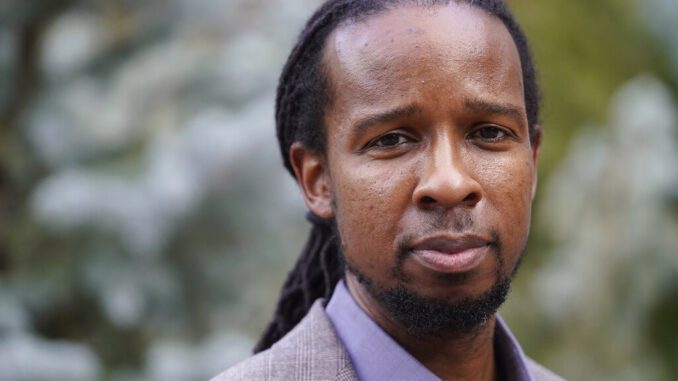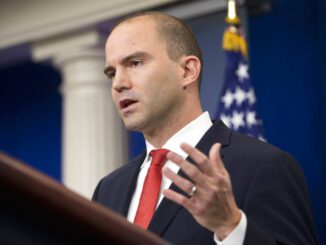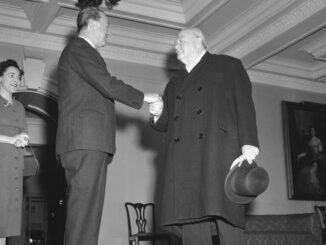
Before 2004, it was unheard of for a college president to admit that the mission of higher education is to give students a leftist makeover. But that is precisely what George Washington University president Stephen Trachtenberg did in June 2004, when he included a fervent wish in his commencement address: “If anybody has a mortarboard, you can move your tassels from right to left, which is what I hope happened to your politics in the last four years!”
higher education is to give students a leftist makeover. But that is precisely what George Washington University president Stephen Trachtenberg did in June 2004, when he included a fervent wish in his commencement address: “If anybody has a mortarboard, you can move your tassels from right to left, which is what I hope happened to your politics in the last four years!”
My fervent wish is that the parents of soon-to-be college freshmen will spend the summer preparing them to face a crush of Trachtenberg clones who’ll coax them to join the troop that marches in one direction — left.
Conscription for the leftward march used to begin in freshman English because English 101 guarantees access to about 90 % of new enrollees. In the late 90s, however, faculty committees decided they needn’t settle for 90 % of new enrollees or wait for the fall round-up to start branding the newbies; hence, the summer reading program was born.
Posing as a way to “build community,” the program insures that new students will arrive in the fall already imbued with what University of Chicago Professor Edward Shils once called “a nihilistic skepticism” about their Western heritage. One glance at a list of favored selections proves Dr. Shills’ point, but parents who practice early detection can provide antidotes for the toxins that are baked into the summer reading requirements.
Teenagers won’t be interested in the origins of the plot to ensnare them, but a bit of background will be helpful for parents who’d rather not underwrite professors who aim to “discard all the norms to which we have been falsely enslaved.” When celebrated Professor Stanley Fish included that line in his 1990 manifesto, he prompted subsequent generations of college professors to assign works that will make even new enrollees rethink their allegiance to a failed nation.
This year’s freshmen might read an anthology titled Tales of Two Americas, which presents America as a “broken” nation whose “systems of oppression have entrenched themselves in the United States.” These systems were “formed by decades of injustice and structural inequality in America, produced by the nation’s growth on the back of stolen labor, the failure of Reconstruction, the entrenchment of racial bias in the culture, and restrictions on immigration.”
Another gloomy favorite is Stanford University Professor Jennifer Eberhardt’s Biased, which posits that “unconscious” bias can be just as noxious as “conscious” bias because “When people focus on not seeing color, they may also fail to see discrimination.” The New York Times hailed Eberhardt’s damned-if-you-do-damned-if-you-don’t approach to racism as “groundbreaking,” “poignant,” and “illuminating,” but I suspect parents will agree with the student reader who dubbed Eberhardt “predictable” because “she can only view life through her race-colored lenses.”
Both works use isolated incidents of injustice to typecast white Americans as racists and to divide all Americans into opposing camps: the oppressors and the oppressed, but young adults who’ve watched live coverage of the crisis at our southern border need no reminding that hundreds of thousands of migrants are risking their lives to become residents of this “broken” and “biased” nation.
Neither work can match the venom Ibram Kendi spews in How To Be An Antiracist, which, thanks to teachers who assign it, has been off and on the best seller list since its publication in 2019. Kendi would have students know that racism is “causing arms races” and “threatening the life of human society with nuclear war and climate change,” but the link between racism and cataclysm is never made clear.
Kendi does, however, prescribe a treatment for racial discrimination: “The only remedy to past discrimination is present discrimination. The only remedy to present discrimination is future discrimination” — against the entire white race. The success Kendi has had inciting students to seek revenge against “White supremacists” who promote “racial inequities” can be measured by the protests that continue to erupt on campuses nationwide.
Despite his success enlisting students to even the score with white people,” Kendi concludes, “There is nothing I see in our world today, in our history, giving me hope that one day antiracists will win the fight.” And despite Kendi’s claim that “To love capitalism is to end up loving racism,” he banks up to 20K an hour to tell students that “Civilization itself is often a polite euphemism for cultural racism.”
When humorist Art Buchwald joked, “You can’t learn history unless you rewrite it,” he anticipated authors like Kendi who reframe our past “as a parade of horrors, to which the most appropriate response is not pride but lacerating shame.” So said prize winning historian Wilfred McClay, whose textbook Land of Hope presents an unsanitized, balanced review of American history that will leave students feeling, dare I say, patriotic.
But if their summer reading breeds contempt for America and our free market economy, students should read Saïd Sayrafiezadeh’s memoir about growing up with a mother who doubled as an activist in the Socialist Workers Party. When Skateboards Will Be Free was his mother’s reason for denying Said’s plea to buy him a skateboard because skateboards will be free for everyone when the Socialist Workers have dismantled capitalism’s “morally bankrupt” system. Sayrafiezadeh escaped his “world of doom and gloom, pessimism and bitterness” by becoming a memoirist, playwright and fiction writer.
African-American students who would escape the plan to fix them as victims of “systemic racism” should read Self Portrait in Black and White, Thomas Chatterton Williams’ assault on the left’s obsession with identity politics. Williams is only one among many African-Americans who have prospered by refusing to be defined by Nikole Hannah-Jones’ claim that “anti-black racism runs in the very DNA of this country.” The real African-American victims are those who’ve been force-fed excerpts from Hannah-Jones’ “egregious” 1619 Project, which makes escape from racism seem highly unlikely.
Students who adopt the left’s contempt for their homeland will echo the Oberlin College senior who, during a 2016 interview with the New Yorker, said that her goal was to “get the eff out of America. It’s a sinking ship.” Oberlin’s would-be expat fits Conor Barnes’ description of “Sad Radicals,” who kowtow to “the norms of radicalism,” which “produce toxic, paranoid, depressed subjects.”
Watchful parents will offer correctives for summer reading that preaches a nihilistic skepticism about our Western heritage.



